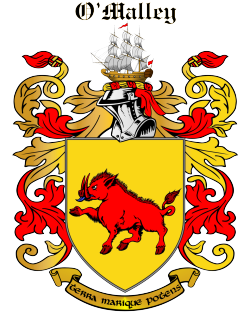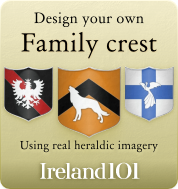Who can see your post?
Your post will show up in News Feed, on your profile and in search results.5,243 Global MARRON Family Members
| Days | Hours | Minutes | Seconds |
MARRON
Family Room
Next Event:
Sunday 21st April
2pm (New York), 7pm (Ire)
Live
| Days | Hours | Minutes | Seconds |
MARRON
Family Room
Next Event:
Sunday 21st April
2pm (New York), 7pm (Ire)
Live
Our in-person family gatherings
Our TEDx talk about family gatherings
MARRON Family History
This surname is of Irish origin being an Anglicized form of the Gaelic O Mearain i.e., 'descendant of Mearan', a personal name from 'mear' meaning 'lovely' or 'quick'. It is most certainly a sept of County Monaghan. Bearers of the name Marren, County Sligo are believed to have been part of the Ulster sept above. Recordings include on Elizabeth Marron, daughter of Eliza and Thomas, who was christened on March 24th at Downpatrick, Co. Down. John, son of Thomas and Catherine Mee Marron, was christened at Carrickmacross, Monaghan, on August 12th 1867.Select Audience
-
Public
Anyone on or off Wales101 -
Friends
Your friends on Wales101 -
Specific
Only show to some friends -
Only me
Only you can see your post
Tag People
SUGGESTIONS
-
Kane William
-
John Micky
-
John william
-
John Smith
-
John
Create Life Event
Share and remember important moments from your life.

Dr Brian Marren

Marron
Michael Marren 1890s to 1921, Sligo, figure in the war for Irish independence

Kevin Murray
My grandmother, Bridget Marron, was born approximately 1851 in County Monaghan, possibly Carrickmacros area but really not sure. Arrived in the US in 1869. Married John Murray in 1876 in Pittsburgh, PA. They moved to the San Francisco Bay area and had 2 sons, Bernard and John Joseph (known as Joe). Returned to Pittsburgh in 1883-1884 and had 2 more sons, James and Michael (a/k/a Francis/Frank). She died in 1922 in Pittsburgh. Possible her father's name was Bernard but again not sure. Hoping to find more specifically her birthplace and possible relatives.

Kevin Murray
My grandmother, Bridget Marron, was born approximately 1851 in County Monaghan, possibly Carrickmacros area but really not sure. Arrived in the US in 1869. Married John Murray in 1876 in Pittsburgh, PA. They moved to the San Francisco Bay area and had 2 sons, Bernard and John Joseph (known as Joe). Returned to Pittsburgh in 1883-1884 and had 2 more sons, James and Michael (a/k/a Francis/Frank). She died in 1922 in Pittsburgh. Possible her father's name was Bernard but again not sure. Hoping to find more specifically her birthplace and possible relatives.
Invite more MARRON family members!
Write an email address and click 'Invite' to share this page with more members of the MARRON tribe.
Log in or Register to invite others
Family Coat of Arms Generator

Why not see what your family crest could look like based on your own family characteristics?
Create CrestJoin the Irish Learning Rooms
SHOP
Show off the MARRON Family Crest…
Wear your crest with pride...plenty of products to choose from



_(2).jpg)
?